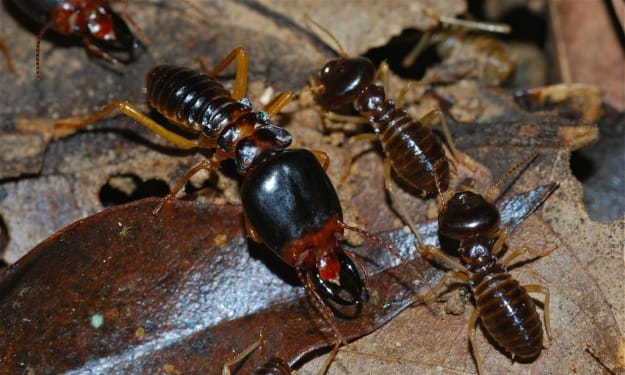National Zoo Celebrates 50 Years of Giant Panda Conservation
Giant pandas have been icons of Washington, D.C., since the early 1970s.
April 16th, 2022, marks the 50th anniversary of Ling-Ling and Hsing-Hsing, the National Zoo’s first giant panda pair. The two bears’ arrival, gifts of friendship with China during President Nixon’s historic visit to the country. It also marked the beginning of a decades-long giant panda conservation program that remains ongoing. Their arrival drew millions of people from around the world to visit the zoo. It also gave the Smithsonian an incredible opportunity to study the behavior, health, reproduction, and ecology of the giant panda. It also helped animal care staff learn about various reproductive cycles in these endangered bears.
Over the course of twenty years, Ling-Ling and Hsing-Hsing produced five cubs, but none of them survived past a few days. Ling-Ling died in 1992 while Hsing-Hsing died in 1999.
Then, on December 6th, 2000, Mei Xiang and Tian Tian came to live at the zoo as part of a breeding loan. In exchange for the two bears, the National Zoo contributed funds and expertise toward conservation efforts in China. This also involves joint efforts with Chinese scientists by providing critical data and management of giant pandas in human care and insight that could help wild populations. The pair is expected to continue to live at the zoo until 2023.
Mei Xiang and Tian Tian have produced four healthy cubs-Tai Shan, Bao Bao, Bei Bei, and Xiao Qi Ji. Both Tai Shan and Bao Bao have since produced cubs of their own, Bei Bei has yet to sire a cub of his own. The cubs are sent to their parents’ birthplace when they are four years old as part of an agreement with the China Wildlife Conservation Association.
Panda Research and Conservation
When Ling-Ling and Hsing-Hsing lived at the National Zoo, there were thought to be less than 1,000 giant pandas left in the wild. Now, there are believed to be nearly 2,000 of them worldwide, with 600 of them living in zoos and breeding centers. Around this time. The zoo celebrated the bears by creating an effective conservation program comprising animal care staff, scientists, researchers, collaborators, and conservationists. Such collaboration has helped save the species from extinction by learning about their biology and habitat.
Ecology
When learning about the ecology of the giant panda, one should note that their native habitat is fragmented because of deforestation and urban development. This makes it difficult for the bears to find food and breed. Both the National Zoo and the China Wildlife Conservation Association have worked together to identify key forest corridors and create restoration plots for bamboo.
Disease
To better understand panda health and the increased risk of pandas developing diseases out in the wild, the zoo collaborated with the Wildlife Disease Control Center to monitor and diagnose disease and age-related illnesses in pandas. Eventually, such information will be used in future biomedical studies.
Training
Over the last fifty years, colleagues from both the National Zoo and from China have worked together on a common goal of advancing scientific understanding of the giant panda. They have developed comprehensive workshops and hand-on training in panda husbandry and care to help both researchers and animal care, staff to build new skills, and care for the bears in both the wild and in human care.
Reproduction
Before breeding can begin, scientists and veterinarians collect semen, freeze them, and defrost samples to decode behavioral and biological signs that the time is ripe for a pregnancy. They also work with animal care experts to collect urine samples and pinpoint behaviors that the female is in estrus and is ready to breed, just in time for reproductive scientists to conduct artificial insemination.
Caring for Giant Pandas
Like with any animal living under human care, teams come together from across the zoo each day to care for their beloved pandas.
Training for Veterinary Care
When many people think about animal training, they normally think of theatrical-styled shows involving birds, big cats, and marine mammals. However, what they don’t know is that animal training is used to help animals with veterinary care.
At the zoo, the animal care staff has built trust with the pandas through positive reinforcement training. This allows the bears to take part in their own health care by allowing their caretakers to conduct examinations, administer medications, and conduct procedures without putting them under anesthesia.
When the animals do the behaviors asked of them, they’ll receive verbal praise and a favorite snack.
Enrichment
Like all animals in human care, the zoo’s pandas receive a variety of EEDs (environmental enrichment devices) and activities that help keep them physically active and mentally sharp throughout the day. They also encourage them to use their natural behaviors. EEDs can range from sensory experiences and toys to social interactions.
The Team
The zoo’s giant panda team cares for these bears every day, including weekends, holidays, and bad weather. Their duties include monitoring panda behavior, diet preparation, preparing their enrichment, collecting urine and fecal samples, conducting training sessions, and cleaning their habitats. They also keep logs of each animal’s activities to track their health.
Panda Nutrition (It’s Obvious!)
Working with local communities, the zoo’s nutrition science department has harvested bamboo, a primary food source for giant pandas across Washington, D.C., Maryland, and Virginia. The pandas may eat shoots, stalks, or leaves. In addition, they also receive apples, sweet potatoes, biscuits, and honey water inside some of their EEDs or during training sessions.
How to Show Your Support For the Zoo’s Panda Program
- Visit the National Zoo during your next trip to Washington, D.C.
- Donate to the zoo’s panda program.
- Shop for exclusive panda merchandise in honor of the 50th anniversary.
- Buy a one-year membership at the zoo.
- Educate yourself about giant pandas and their natural habitat.
A big congrats to the National Zoo on fifty incredible years of giant panda conservation and may the next five decades bring some incredible accomplishments that can ensure the survival of these beautiful bears.
About the Creator
Jenna Deedy
Zoo and Aquarium Professional, Educator, Cosplayer, Writer and B.A. in Psychology whose got a lot to share when it comes to animals, zoos, aquariums, conservation, and more.
Instagram: @jennacostadeedy






Comments
There are no comments for this story
Be the first to respond and start the conversation.